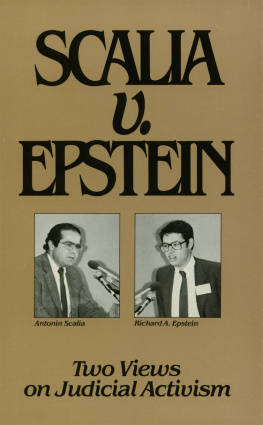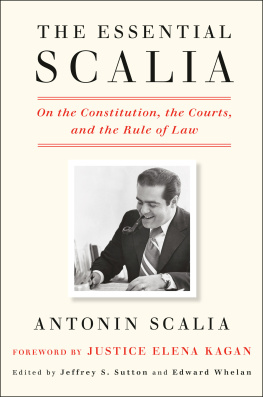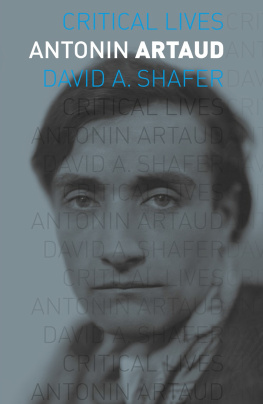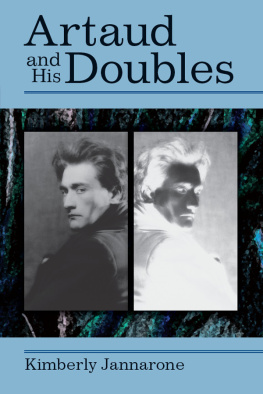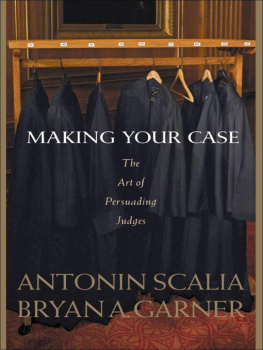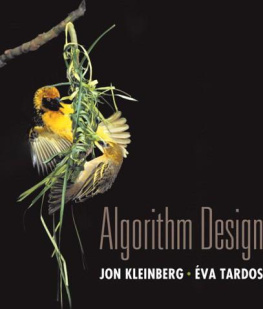Antonin Tuynman - Is Intelligence an Algorithm?
Here you can read online Antonin Tuynman - Is Intelligence an Algorithm? full text of the book (entire story) in english for free. Download pdf and epub, get meaning, cover and reviews about this ebook. year: 2018, publisher: Iff Books, genre: Religion. Description of the work, (preface) as well as reviews are available. Best literature library LitArk.com created for fans of good reading and offers a wide selection of genres:
Romance novel
Science fiction
Adventure
Detective
Science
History
Home and family
Prose
Art
Politics
Computer
Non-fiction
Religion
Business
Children
Humor
Choose a favorite category and find really read worthwhile books. Enjoy immersion in the world of imagination, feel the emotions of the characters or learn something new for yourself, make an fascinating discovery.

- Book:Is Intelligence an Algorithm?
- Author:
- Publisher:Iff Books
- Genre:
- Year:2018
- Rating:3 / 5
- Favourites:Add to favourites
- Your mark:
- 60
- 1
- 2
- 3
- 4
- 5
Is Intelligence an Algorithm?: summary, description and annotation
We offer to read an annotation, description, summary or preface (depends on what the author of the book "Is Intelligence an Algorithm?" wrote himself). If you haven't found the necessary information about the book — write in the comments, we will try to find it.
Is Intelligence an Algorithm? — read online for free the complete book (whole text) full work
Below is the text of the book, divided by pages. System saving the place of the last page read, allows you to conveniently read the book "Is Intelligence an Algorithm?" online for free, without having to search again every time where you left off. Put a bookmark, and you can go to the page where you finished reading at any time.
Font size:
Interval:
Bookmark:

First published by iff Books, 2018
iff Books is an imprint of John Hunt Publishing Ltd., Laurel House, Station Approach,
Alresford, Hants, SO24 9JH, UK
office1@jhpbooks.net
www.johnhuntpublishing.com
www.iff-books.com
For distributor details and how to order please visit the Ordering section on our website.
Text copyright: Antonin Tuynman 2017
ISBN: 978 1 78535 670 4
978 1 78535 671 1 (ebook)
Library of Congress Control Number: 2017931224
All rights reserved. Except for brief quotations in critical articles or reviews, no part of this book may be reproduced in any manner without prior written permission from the publishers.
The rights of Antonin Tuynman as author have been asserted in accordance with the Copyright, Designs and Patents Act 1988.
A CIP catalogue record for this book is available from the British Library.
Design: Stuart Davies
Printed and bound by CPI Group (UK) Ltd, Croydon, CR0 4YY, UK
We operate a distinctive and ethical publishing philosophy in all areas of our business, from our global network of authors to production and worldwide distribution.
Other books by Antonin Tuynman
Technovedanta:
Internet Architecture of a Quasiconscious Vedantic Webmind:
A Panpsychic Theory of Everything
Transcendental Metaphysics:
Technovedanta 2.0:
Transcendental Metaphysics of Pancomputational Panpsychism
The present book provides an analysis of intelligence. How do we understand the world around us? How do we solve problems? It has occurred to me that most often the answer to these questions follows a certain pattern, an algorithm if you wish. This is the case when our analytical left-brain side is at work. However, there are also elements in our behaviour where intelligence appears to follow a more elusive path, which cannot easily be pinned down to a specific sequence of steps. For instance our emotions and intuition cannot readily be described in an ontology of structural features and functions.
This book will, however, not only try to give you insight in intelligence as it functions in nature, like human or animal intelligence, but will also shed light on modern developments had left open a number of then still unsolved problems.
Essentially I will try to draw a line and figure out where intelligence is algorithmic and where intelligence is what we could call holistic.
The advantage of breaking down the analytical intelligence into understandable steps is that if we become conscious of these steps, we can also consciously implement them, avoid logical fallacies and develop a rapid strategy towards a solution, which does not need to evaluate all possible avenues. Such a strategy is called a heuristic.
Whereas many books have been written on the topic of devising heuristics, this has often been done in a specific context. Not in the least place by G. Plya in his excellent book How to Solve It, which relates to mathematical problems. The present book provides general strategies for problems of any nature.
I hope that this attempt will be successful and provide you with a toolkit which allows faster pattern recognition and a more focussed strategy to find solutions to problems. What I ultimately hope to achieve is to increase your intelligence, as it gives you an enhanced freedom in dealing with the world around you and is a recipe for happiness.
Steemit
The way this book came about is a peculiar one, and needs a bit of an explanation. You can skip this part of the preface and jump to because it is outside the framework of the topic of this book. But it may provide you with some insight into how I came to certain ideas explained herein.
In November 2016 I started writing a blog on the blog website Steemit. Steemit is a very peculiar website. It is not just a platform to post articles and other creative products, no, it is a platform that rewards you for your contributions. Yes, you hear it well, you can be paid for your artistic concoctions.
You are paid in a currency called Steem. This is a so-called cryptocurrency, like Bitcoin. This is not fake money, you can actually change Steem into Bitcoins and Bitcoins into Dollars via another platform called Poloniex.
Where does this money come from? Cryptocurrencies are electronically mined in a computer network. Essentially, the computer is rewarded for solving difficult math problems. This processing power is used to verify transactions, so that number-crunching is required for the cryptocurrency to work. Users offer their computing power to verify and record cryptocurrency transactions into a so-called blockchain.
According to Wikipedia a blockchain is a distributed database that maintains a continuously-growing list of ordered records called blocks. Each block contains a timestamp and a link to a previous block. By design blockchains are inherently resistant to modification of the data once recorded, the data in a block cannot be altered retroactively.
In Steemit, part of the blockchain is concerned with mining Steem and Steem-based transactions. Another important part is concerned with the posts submitted by the content creators.
Every day part of all the Steem mined by the miners is redistributed among the content creators.
Every post by a content creator is open for 24 hours for voting. If people have a lot of voting power, by voting they attribute value in Steem to a post. After the voting cycle is over, the major part of the Steem gathered is paid out to the content creator and a minor part is split among the people who voted for the post. Voting for a post is called curation and curators thus also receive a small reward.
People with an enormous amount of voting power are the so-called Whales. If a whale votes for your post, suddenly the value goes up by the equivalent of about $10 or more. Active members with an intermediate amount of voting power are called Dolphins and can contribute the equivalent of a few cents to a few dollars of value.
The rest of the Steemit population are called the Minnows. They have not gathered enough voting power to attribute value. With every post you are rewarded for, your reputation index increases. The higher your reputation, the more likely people will vote for you.
You can convert your Steem into Steem Power, which is voting power. This transaction can also be reversed. You can also save your money in the form of Steem Dollars, which are a less volatile currency than Steem itself, which is prone to inflation.
The advantage of this system is that people are encouraged to provide interesting content and being rewarded stimulates them to continue. It is also an open system in the sense that the total amount of currency that can become available is not fixed. Somehow money is created out of thin air, but since there is trust in it, the system works wonderfully well.
It is here that I started my blog and since my series on Is Intelligence an Algorithm thrived and received quite some attention and rewards, I realised that this is information which people actually are interested in, and thats why I thought it useful to bundle it in a book. Of course you dont need to spend your money on this book, as you can read it entirely on the blockchain, but you will have to search for the different chapters.
Here you have them combined in a handy format with the bonus that I have completely referenced and cross-referenced it.
Qualifications
You may wonder what my qualifications are to write this book. I am neither a psychologist nor a neuroscientist. Instead I am a biochemist working as a patent examiner for the European Patent Office (EPO). It is, however, at the EPO where I became interested in artificial intelligence, heuristics and search engines. After all a patent examiner must search for prior art documents which have a similar or preferably the same content as a claimed invention. Moreover, a patent examiner must assess whether it was obvious to solve a given problem in the way proposed by the invention. To do so the EPO has developed a kind of algorithm, which is called the problem solution-approach.
Font size:
Interval:
Bookmark:
Similar books «Is Intelligence an Algorithm?»
Look at similar books to Is Intelligence an Algorithm?. We have selected literature similar in name and meaning in the hope of providing readers with more options to find new, interesting, not yet read works.
Discussion, reviews of the book Is Intelligence an Algorithm? and just readers' own opinions. Leave your comments, write what you think about the work, its meaning or the main characters. Specify what exactly you liked and what you didn't like, and why you think so.

